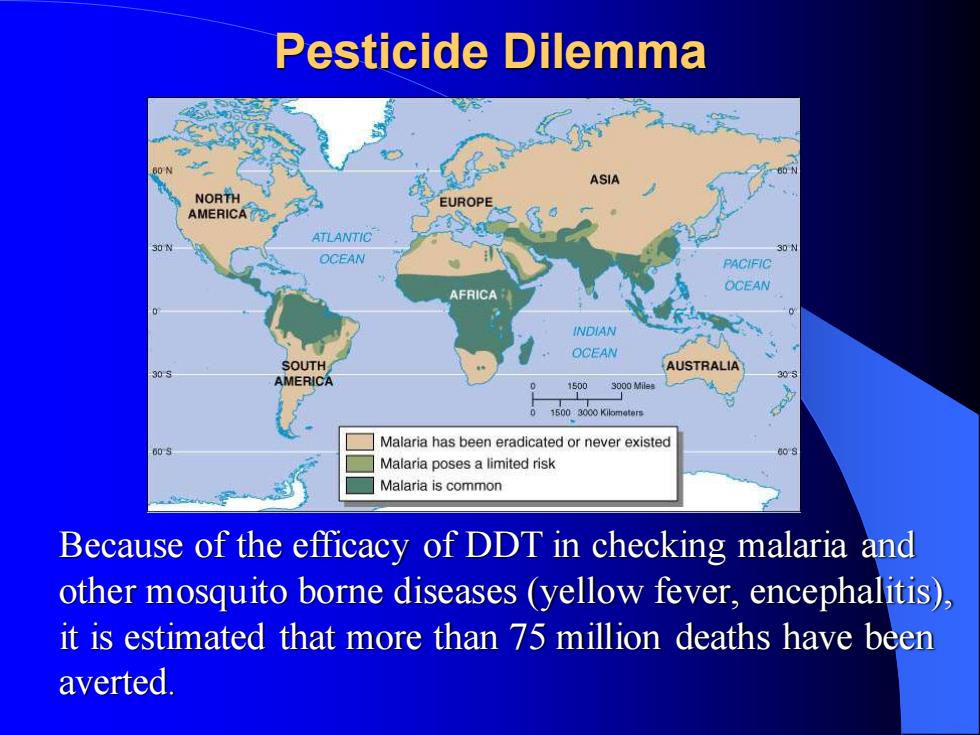
Pesticide Dilemma Because of the efficacy of DDT in checking malaria and other mosquito borne diseases (yellow fever, encephalitis), it is estimated that more than 75 million deaths have been averted
Pesticide Dilemma Because of the efficacy of DDT in checking malaria and other mosquito borne diseases (yellow fever, encephalitis), it is estimated that more than 75 million deaths have been averted
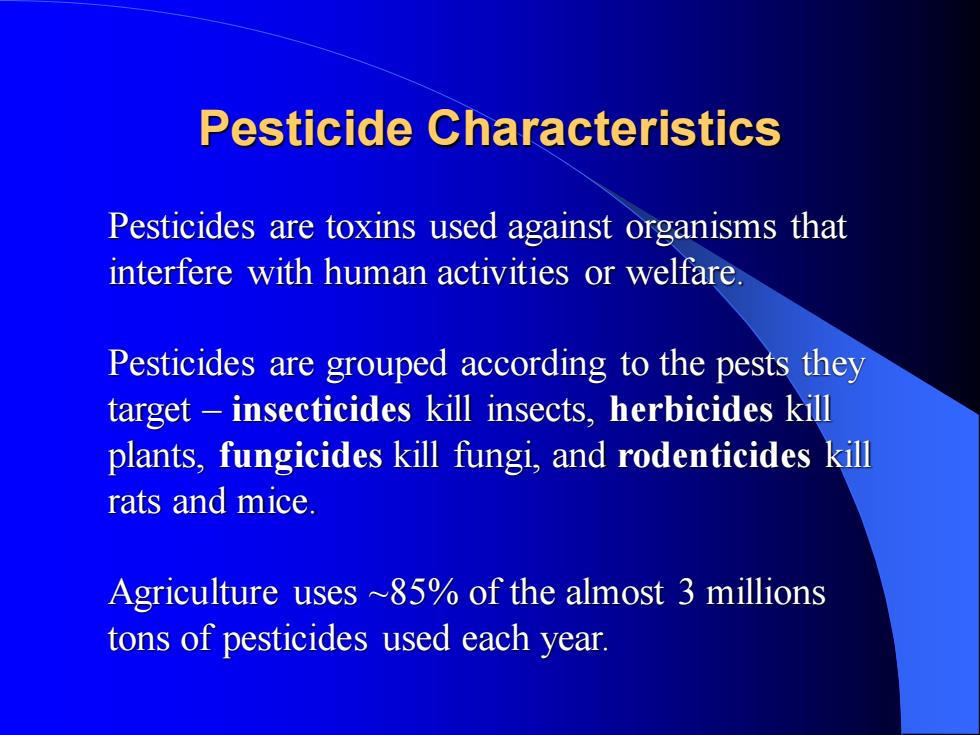
Pesticide Characteristics Pesticides are toxins used against organisms that interfere with human activities or welfare. Pesticides are grouped according to the pests they target – insecticides kill insects, herbicides kill plants, fungicides kill fungi, and rodenticides kill rats and mice. Agriculture uses ~85% of the almost 3 millions tons of pesticides used each year
Pesticide Characteristics Pesticides are toxins used against organisms that interfere with human activities or welfare. Pesticides are grouped according to the pests they target – insecticides kill insects, herbicides kill plants, fungicides kill fungi, and rodenticides kill rats and mice. Agriculture uses ~85% of the almost 3 millions tons of pesticides used each year
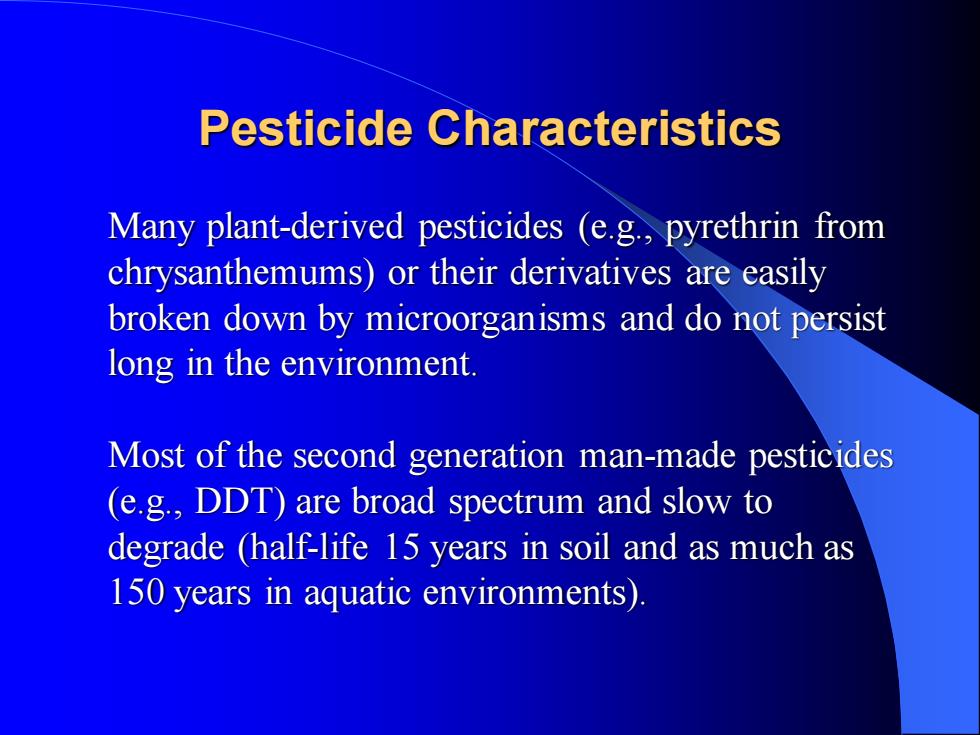
Pesticide Characteristics Many plant-derived pesticides (e.g., pyrethrin from chrysanthemums) or their derivatives are easily broken down by microorganisms and do not persist long in the environment. Most of the second generation man-made pesticides (e.g., DDT) are broad spectrum and slow to degrade (half-life 15 years in soil and as much as 150 years in aquatic environments)
Pesticide Characteristics Many plant-derived pesticides (e.g., pyrethrin from chrysanthemums) or their derivatives are easily broken down by microorganisms and do not persist long in the environment. Most of the second generation man-made pesticides (e.g., DDT) are broad spectrum and slow to degrade (half-life 15 years in soil and as much as 150 years in aquatic environments)
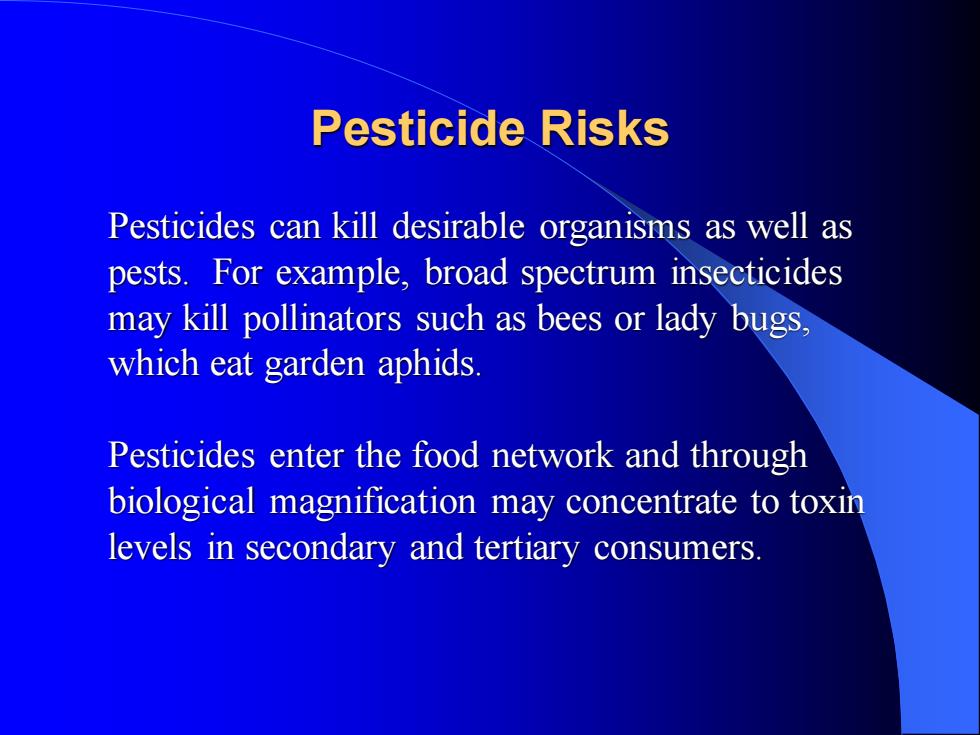
Pesticide Risks Pesticides can kill desirable organisms as well as pests. For example, broad spectrum insecticides may kill pollinators such as bees or lady bugs, which eat garden aphids. Pesticides enter the food network and through biological magnification may concentrate to toxin levels in secondary and tertiary consumers
Pesticide Risks Pesticides can kill desirable organisms as well as pests. For example, broad spectrum insecticides may kill pollinators such as bees or lady bugs, which eat garden aphids. Pesticides enter the food network and through biological magnification may concentrate to toxin levels in secondary and tertiary consumers
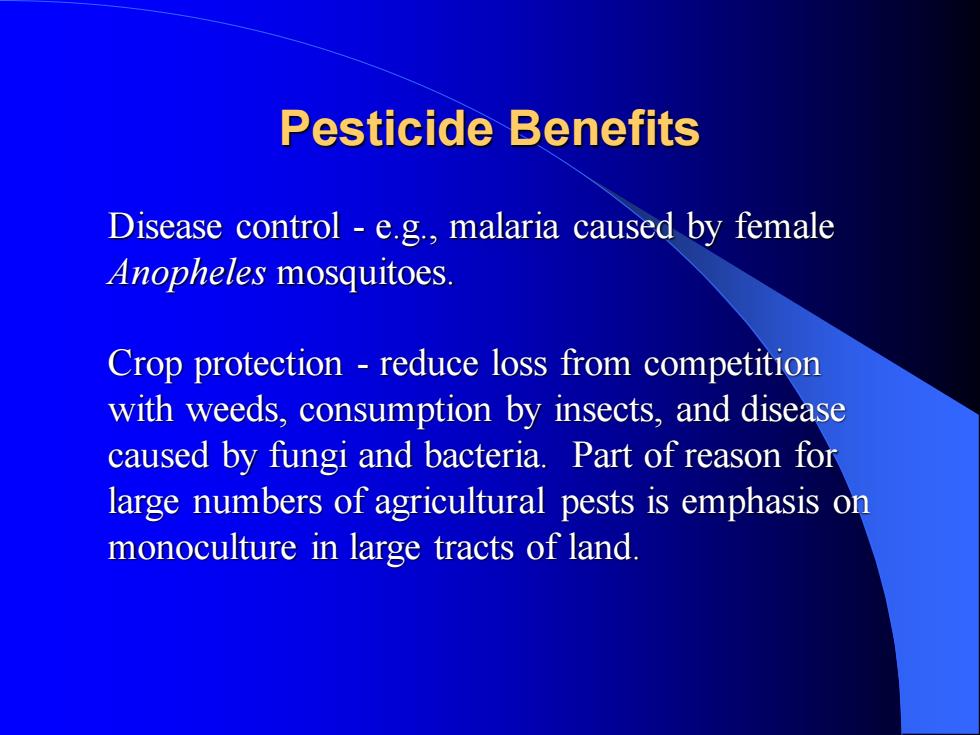
Pesticide Benefits Disease control - e.g., malaria caused by female Anopheles mosquitoes. Crop protection - reduce loss from competition with weeds, consumption by insects, and disease caused by fungi and bacteria. Part of reason for large numbers of agricultural pests is emphasis on monoculture in large tracts of land
Pesticide Benefits Disease control - e.g., malaria caused by female Anopheles mosquitoes. Crop protection - reduce loss from competition with weeds, consumption by insects, and disease caused by fungi and bacteria. Part of reason for large numbers of agricultural pests is emphasis on monoculture in large tracts of land